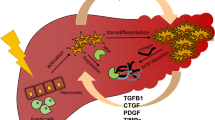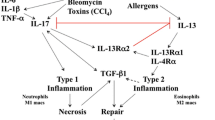Abstract:
The injury response of the liver fits within the general paradigm of wound repair. The overall repair response requires close coordination of several cell types and synthetic processes and is orchestrated by an interacting group of cytokines, extracellular matrix (ECM) proteins, and products of metabolism such as oxygen radicals. Many cytokines act over short distances, engaging specific receptors on their parent cell (autocrine) or on immediately adjacent cells (paracrine). The most prominent of these is transforming growth factor-β (TGFβ). The ECM also mediates cellular crosstalk and does so in two ways. Firstly, as a binder of cytokines, it is capable of concentrating, presenting, or sequestering these factors at specific locations. Secondly, like cytokines, individual ECM proteins interact with cells via specific receptors, many of which belong to the integrin family. Engagement of a receptor leads to its activation, followed by intracellular signaling events and modification of cell behavior. Recent work has identified a specific integrin on stellate cells (α1β1) as critical to the contractility of these cells. Finally, contrary to the view once held of ECM as relatively inert "ground substance", this extracellular complex is highly dynamic, its cytokine- and cell-binding activities being subject to rapid change. Therefore, matrix proteinases also are important, both during the initiation of fibrosis in association with stellate cell activation, and during the resolution of the injury. As current research reveals the key elements of this regulatory network, new therapeutic modalities are emerging. The goal of therapy is to modify the extent of the repair response without deleting it. Strategies directed at several levels of regulation are under consideration, including agents that block cytokine effects (e.g., TGFβ receptor antagonists) and direct inhibitors of stellate cell activation or contraction.
Similar content being viewed by others
Author information
Authors and Affiliations
Additional information
(Received Sept. 4, 1997; accepted Oct. 30, 1997)
Rights and permissions
About this article
Cite this article
Bissell, D. Hepatic fibrosis as wound repair: A progress report. J Gastroenterol 33, 295–302 (1998). https://doi.org/10.1007/s005350050087
Issue Date:
DOI: https://doi.org/10.1007/s005350050087




